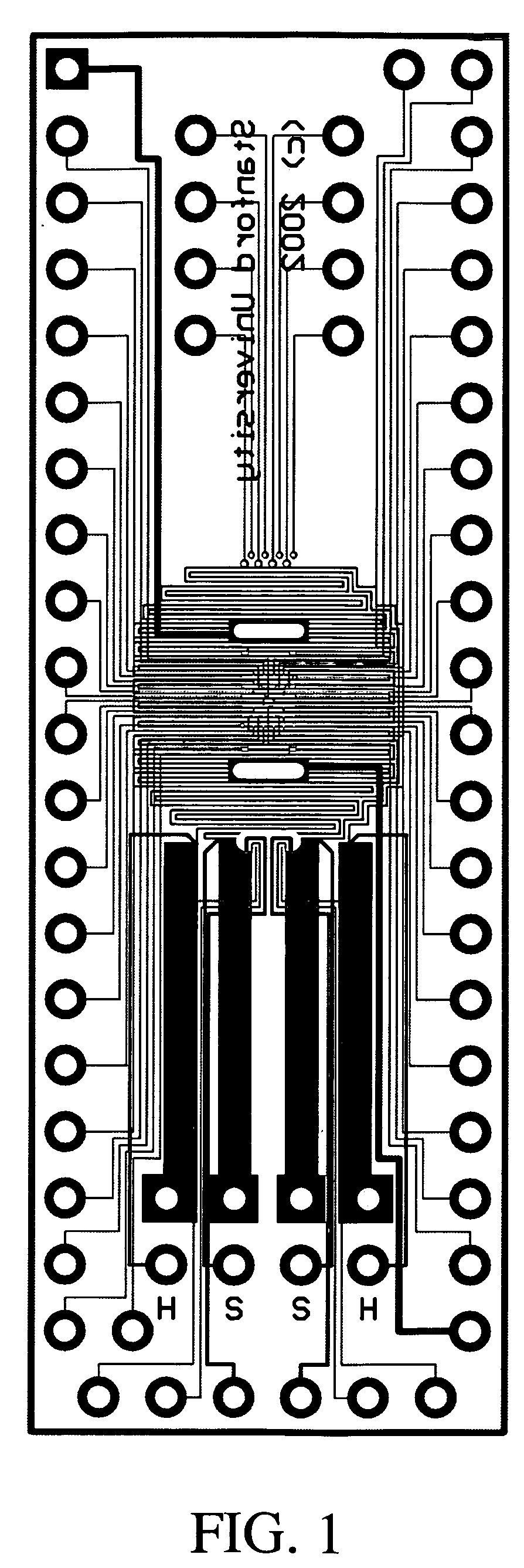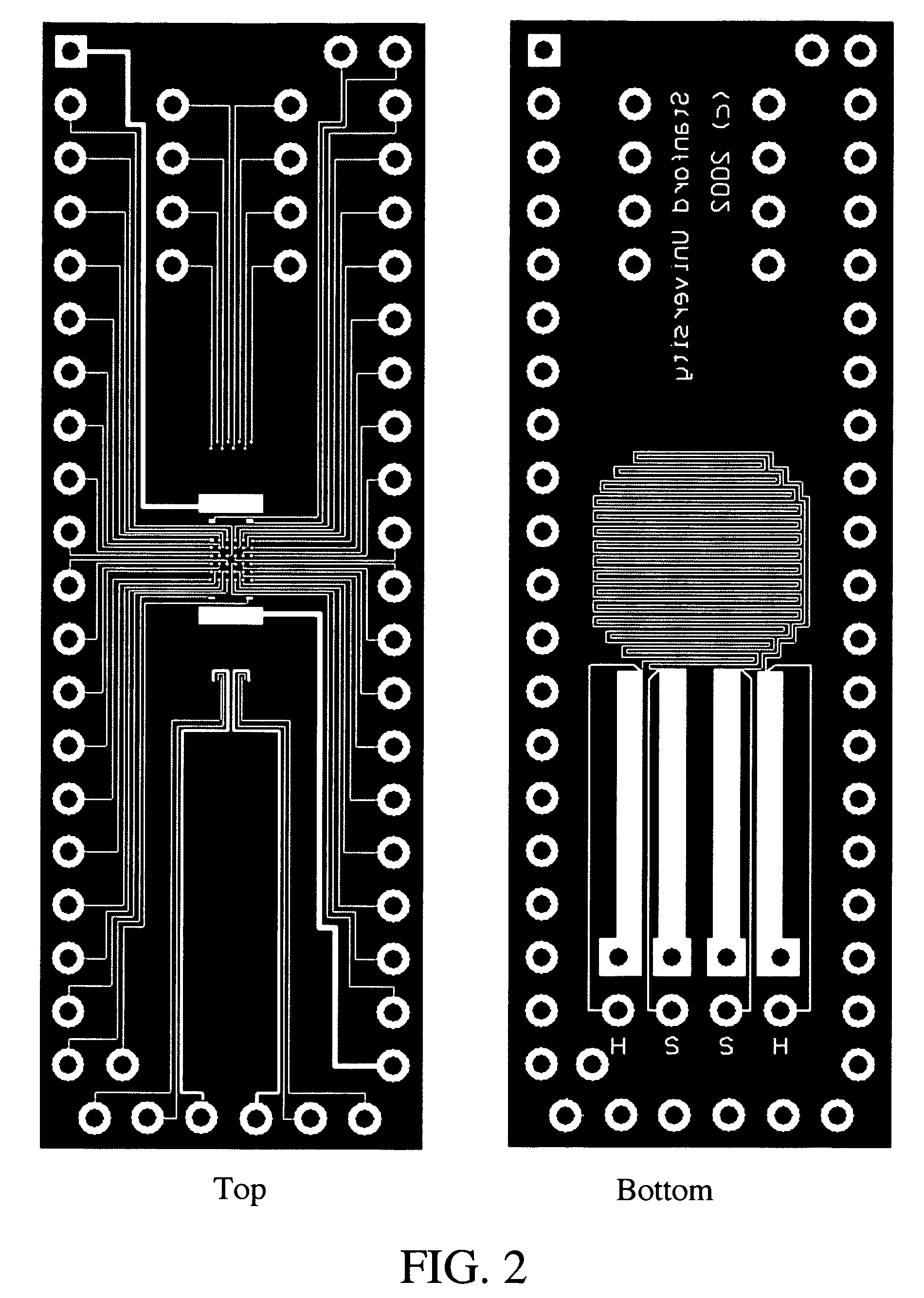Low cost fabrication of microelectrode arrays for cell-based biosensors and drug discovery methods
a cell-based biosensor and low-cost technology, applied in the field of microelectrode arrays, can solve the problems of many standard materials and processes that are not suitable for biological applications, many standard materials and processes have poor biocompatibility, and the general knowledge of unmodified pcb fabrication technology is not useful or viable for fabricating microelectrode arrays. , to achieve the effect of reducing the cost of fabricating and efficient mass production of low-cost microelectrode array
- Summary
- Abstract
- Description
- Claims
- Application Information
AI Technical Summary
Benefits of technology
Problems solved by technology
Method used
Image
Examples
Embodiment Construction
)
[0031] Microelectrode arrays of the present invention are preferably fabricated using flexible PCB (flex-PCB) technologies. Compared with their rigid counterparts, epoxy-based PCB technologies, Flex-PCB technologies provide denser integration, with typical feature size of 3 to 4 mils (75 to 100 μm). High-end technologies enabling much smaller features are usually not advantageous for low-cost applications due to their associated higher fabrication cost, although they could still be employed for applications that require smaller electrodes.
[0032] Flex-PCB technologies primarily use polyimide (most common), polyester or liquid crystal polymer (LCP) as substrates, copper as conductors, photolithography, drilling and laser etching for patterning, and various metal finishes, including gold. In comparison to microelectronic manufacturing, these commercial PCB technologies have been optimized for larger circuits, lower resolution, and are highly standardized to achieve the low cost impos...
PUM
| Property | Measurement | Unit |
|---|---|---|
| Time | aaaaa | aaaaa |
| Time | aaaaa | aaaaa |
| Time | aaaaa | aaaaa |
Abstract
Description
Claims
Application Information
 Login to View More
Login to View More - R&D
- Intellectual Property
- Life Sciences
- Materials
- Tech Scout
- Unparalleled Data Quality
- Higher Quality Content
- 60% Fewer Hallucinations
Browse by: Latest US Patents, China's latest patents, Technical Efficacy Thesaurus, Application Domain, Technology Topic, Popular Technical Reports.
© 2025 PatSnap. All rights reserved.Legal|Privacy policy|Modern Slavery Act Transparency Statement|Sitemap|About US| Contact US: help@patsnap.com



